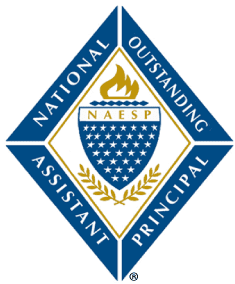
Gregory S. Mitchell
Club Boulevard Humanities Magnet Elementary School
Durham, North Carolina
gregory.mitchell@dpsnc.net
Best Practices
1) School leaders are constantly exhorted to be “instructional experts,” despite also having primary responsibility for a multitude of other key functions in the school. In the face of these many priorities, instructional leadership exhibits a profound shift away from being an “expert” to being a “lead learner” in the school.
Michael Fullan writes that “the principal’s role is to lead the school’s teachers in a process of learning to improve their teaching, while learning alongside them about what works and what doesn’t.” I practice this type of leadership partly out of necessity—as I moved into elementary school leadership from a 12-year career in high schools—but also because it is a more effective and empowering way to lead a school. For me, being a lead learner has involved attending professional development alongside teachers, engaging in genuine dialogues about best practices with our staff, modeling instructional strategies in classrooms, reading academic research and leading discussion groups on relevant topics such as the achievement gap, and shifting the teacher evaluation process to mirror what is happening in the classroom and to promote teacher self-reflection through questioning.
Over the past five years, I have had several high-impact opportunities to learn and apply the curricular and pedagogical practices that we espouse at our school. First, I joined teachers in administering DIBELS subtests to students. Despite my background as a high school science teacher, administering these foundational reading assessments enabled me to quickly learn the skills require for students to become fluent readers. Second, I attended Responsive Classroom (RC) training alongside our staff and collaborated with several different teachers to lead Morning Meetings in their classrooms. This enabled me to form deeper relationships with those students and teachers, as well as to model implementation of RC practices with fidelity. Finally, I have looked for opportunities to jump into the classroom in order to keep students learning in the face of long-term staffing vacancies. As an assistant principal, I have variously taught 4th grade math, 5th grade ELA, and 5th grade science for several weeks at a time due to unforeseen vacancies. These experiences forced me to study and implement our school’s curricula while working closely with grade-level teams in authentic ways that furthered my instructional credibility. Teaching alongside our staff still pays dividends, as I am able to ask pedagogical and curricular questions with greater specificity, offer suggestions based on my own experiences of teaching the same curricula, and regularly pull groups of students to work with me on academic content.
2) Jim Collins argues in his business leadership book, Good to Great, that productive change only occurs when companies “confront the brutal facts” of their current realities. This is also true for schools, which makes identifying, collecting, and using meaningful data a prerequisite for school improvement.
The first step is to identify key data points that give an accurate assessment of the school’s current reality. At our school this has meant both creating new data collection instruments and looking differently and more deeply at existing data sets. Data instruments that we have designed and implemented have included an annual survey to gather parent feedback, a reading goal tracker to measure intra-year progress for each student, and an internal staff turnover tracking instrument that delineates specific reasons for staff turnover. We have also looked more deeply at existing data sets to unearth important trends—analyzing our 5th grade student climate survey by ethnicity to look for patterns, following student academic progress over time to track cohort progress, and disaggregating our magnet lottery applicants and matriculants to pursue diversity at our school.
After identifying data that accurately describe our school’s reality, the next step is to be transparent with our stakeholders. We regularly meet with staff and parents to share our data, discuss causes and effects, and to build our community’s capacity around interpreting the many data points that we track. Sometimes this can lead to difficult and heart-wrenching conversations—such as when we discuss cohort underperformance with a particular teacher. However, while confronting the facts can be difficult and humbling, it is a necessary precondition to asking for help, seeking additional resources, and making improvement plans.
Finally, we need to use data to maintain areas of strength and to drive improvement in areas of weakness. One such example was a shift we made in extended learning time. We had conducted a Saturday Academy for students in need of extra support for two years, but the data showed that it had minimal effect on students’ test scores and did not narrow the achievement gap. Armed with that data—and after reviewing research literature on the importance of academic engagement and relationships in addressing the achievement gap—we designed an Afterschool Academy that met more frequently for shorter periods of time and had an intentional emphasis on teacher-student and teacher-parent relationships. The result was a marked increase in academic outcomes for the students who attended Afterschool Academy and a commensurate decrease in the achievement gap. Our increased capacity to gather and respond to meaningful data has helped to drive academic growth for all students, decrease teacher turnover, attract increasing numbers of families, decrease in-school and outof-school suspensions, and improve our school’s climate.


